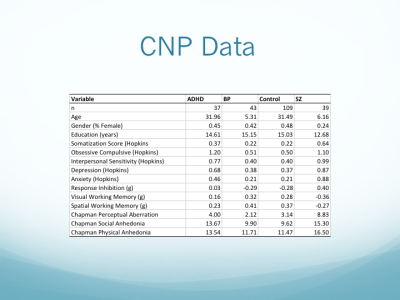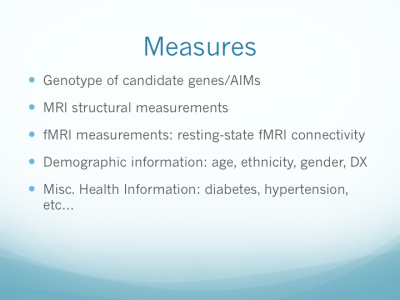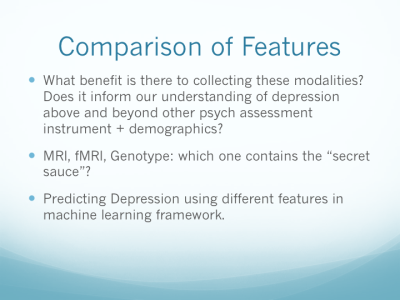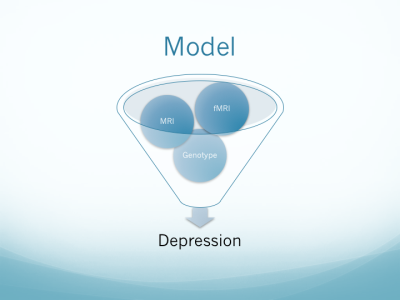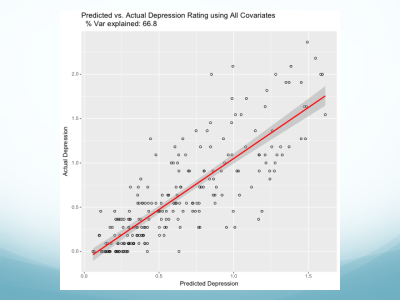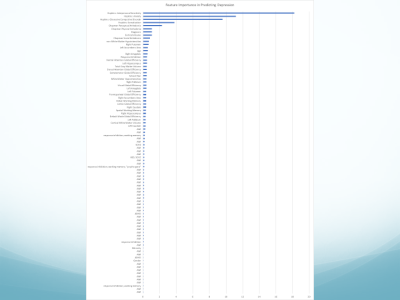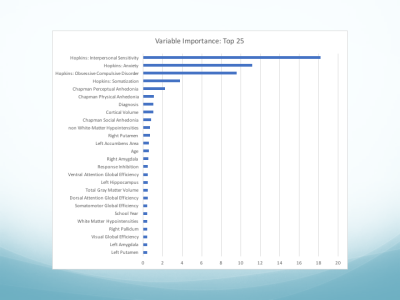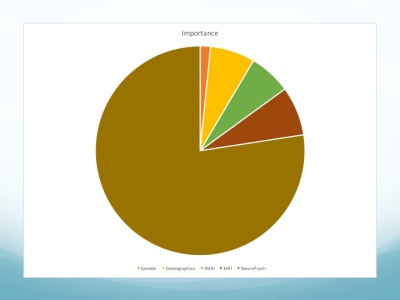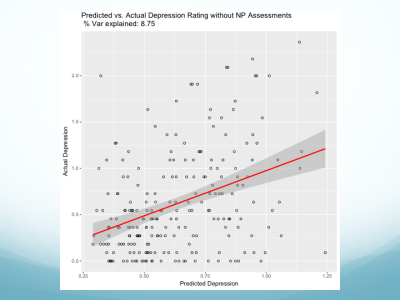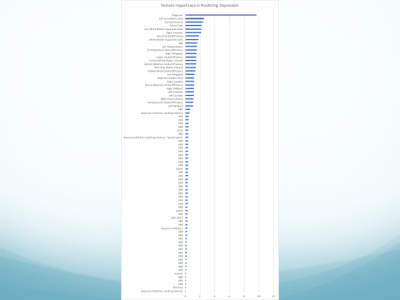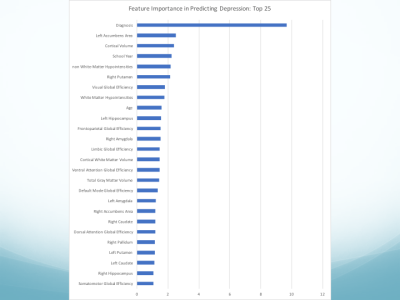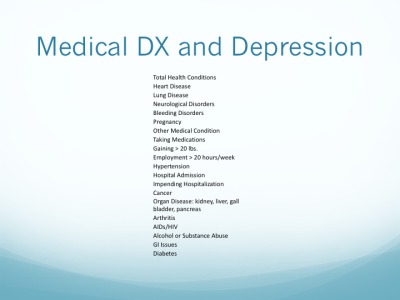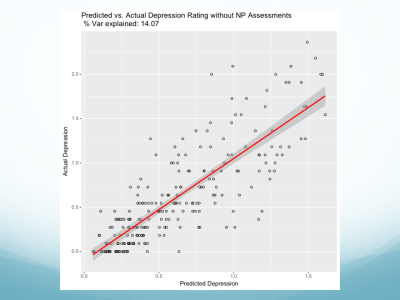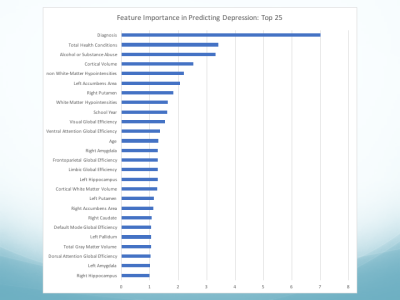fMRI Connectivity, Depression, and Anhedonia: a Bayesian network analyses in Schizophrenia, Bipolar Disorder, ADHD, and Healthy Controls
1University of California, Los Angeles, 2Psychiatry and Biobehavioral Sciences, UCLA, Malibu, CA, United States, 3Statistics, UCLA, Malibu, CA, United States, 4Psychiatry and BIobehavioral Sciences, UCLA, Malibu, CA, United States
Synopsis
Although MRI, fMRI, and genetic biomarkers have been implicated in depression, it is unclear how much these measures illuminate the disorder compared to behavioral and demographic measurements. Using these measurements, we predicted depressive symptoms to compare the effect size of these modalities. In 119 subjects with a diagnosis of Bipolar disorder (n=43), Schizophrenia (n=39), and ADHD (n= 37), random forests models predicted both generalized depression (Hopkin Symptom Checklist) and anhedonia-specific measures (Chapman Scales for Physical and Social Anhedonia) using genetic, structural MRI volumetric measures, resting-state fMRI network connectivity measures, demographic features, and behavioral assessments measures. We found that comorbid behavioral symptoms accounted for nearly 75% of predictive ability. When removing behavioral assessments, only 8.75% of variance in the depression symptom scores were predictable from neuroimaging, demographic, genetic measures. Demographics retained the strongest predictive ability.


